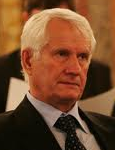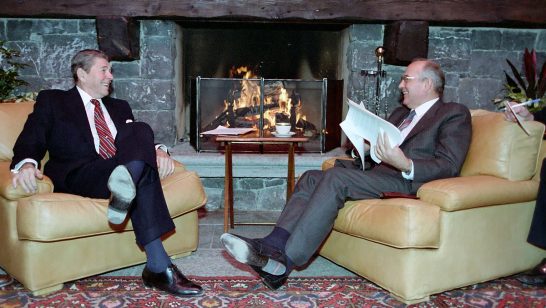
Nuclear Reductions After New START: Obstacles and Opportunities.
Introduction
The US-Russian New START Treaty, while not effectively reducing the overall level of strategic nuclear forces, returned the practice of arms control to the US-Russian bilateral relationship after many years of absence. A common view expressed in the political and academic community of the West is that with the New START Treaty now entered into force, it is right for the next round of nuclear weapon reductions to include non-strategic nuclear weapons. Russian official statements have indicated a willingness to discuss this type of nuclear weapon, but only in conjunction with other issues. The list of these issues is presented in the ratification statement of the Russian State Duma, which says that “questions concerning potential reductions and limitations of non-strategic nuclear arms must be considered in a complex of other problems of arms control, including deployment of any ballistic missile defense (BMD) systems, plans for the creation and deployment of strategic delivery vehicles armed with non-nuclear weapons, the risk of space militarization, as well as existing quantitative and qualitative disparities in conventional arms, on the basis of necessity to maintain strategic stability and strict observance of a principle of equal and indivisible security for all”.
It is obvious that the United States and Russia have to settle these wider issues in order to maintain the momentum of the New START Treaty and move further on nuclear weapons reductions.
I intend to elaborate on two of these wider issues – missile defense and the non-strategic nuclear weapons, in this short opinion paper for the European Leadership Network.
Ballistic Missile Defence
Ballistic missile defence (BMD) plans are the most difficult issue because the sides’ current attitudes toward their potential role for national security diverge dramatically. New START recognizes that there is an interrelationship between strategic offensive weapons and strategic defensive weapons. However, in the view of some Russian experts missile defences affect strategic stability through their potential to undermine Russia’s nuclear deterrent. Moreover, because BMD might work much better against a limited attack than a large scale one, it creates a dynamic in which a pre-emptive all-out strike would be an obvious choice for both the US and Russia in a crisis: for the side with BMD in this scenario the temptation might be to launch a first strike and then rely on the defensive shield to deal with any response. For the side without BMD but fearing an imminent attack, the temptation would be to launch a large scale pre-emptive strike of its own to guarantee that its offensive nuclear weapons got through, rather than wait to be hit first and then face the prospect of trying to penetrate an opponent’s defensive shield with just a few remaining nuclear weapons. This is certainly a very conservative way of thinking about it and appears extreme under present-day conditions when the possibility of a massive armed conflict between the superpowers and their allies is close to zero. But we need to be realistic and to take into account that nuclear deterrence thinking continues to exist and that these views will be, and are, expressed.
The Obama administration’s European Phased Adaptive Approach to the development of missile defenses provides for deployment by 2020 of a system capable of intercepting intermediate-range and intercontinental ballistic missiles (ICBMs). U.S. sources admit that the new system will be more effective in countering individual long-range ballistic missiles.
The Russian military is concerned about US plans. These concerns are not based on the known capabilities of existing and planned deployments of US missile defense elements, but mostly on the potential for the further development and augmentation of these elements in future. If such a system is further developed, then enhancing it to the point that it would pose a threat to Russia’s deterrence capability would be just a matter of time.
NATO’s new Strategic Concept announced that the Alliance must have a shield against ballistic missile attack – from countries like Iran – to defend their populations and territories. In Russia there are experts who consider the missile attack threat from Iran as a hypothetical, not real one. But if the creation of protection against such threats is thought to be indispensable, Moscow wants to be involved in the process of creation of a missile shield rather than outside it. Moscow considers cooperation with NATO on missile defence as a way of building a strategic partnership with the alliance and it makes clear that without such real cooperation the continuation of nuclear weapons reduction will be impossible.
Just recently after the G8 Summit in Deauville the Russian President Dmitriy Medvedev declared: “If we fail to agree (on BMD cooperation), the real arms race will begin. If we do agree, then the situation will differ dramatically.” In this context, U.S./NATO – Russia missile defence cooperation gains special importance and is a key issue in the entire future of Euro-Atlantic security. U.S./NATO – Russia cooperation could help all parties to better understand missile threats as well as offer a way to overcome different perceptions of them.
A Two Stage Process on Non-Strategic Nuclear Weapons
Let me now turn to non-strategic nuclear weapons. For this class of nuclear weapons there are also different definitions—tactical, sub-strategic, or short-range nuclear weapons. I use the term “non-strategic nuclear weapons” that refers to U.S. and Russian nuclear warheads associated with delivery systems that are not covered by New START.
This type of weapon is not covered by any arms control agreements. While the principal U.S. and European countries’ interest in negotiations on non-strategic weapons is linked to Russia’s numerical superiority in this area, there are also several objective factors that are pushing the U.S. and Russia to introduce transparency about, and initiate some reduction of, these weapons. Among such factors are that:
- Further progress in nuclear weapons reduction will be impossible without inclusion in the process of non-strategic nuclear weapons;
- The creation of a new security architecture in Europe requires an agreement on non-strategic nuclear weapons;
- The upcoming expiration of the service life-time for many types of non-strategic nuclear weapons means decisions are required soon, either to eliminate them or to replace them with new weapons.
There is thus a timely opportunity to address this issue.
Russian officials have indicated their willingness to discuss it, but Moscow insists that possible steps with respect to non-strategic nuclear weapons, including development of transparency measures, can be taken only in the context of the general military-strategic situation and the other factors that directly affect the maintenance of the balance of power in the world, including:
- The nuclear weapons capabilities of other states;
- Consolidation of nonstrategic nuclear weapons within national territories;
- The imbalance in conventional arms between Russia and NATO;
- The development and deployment by the U.S. of conventional strategic high-precision weapons.
All of these factors make Moscow’s approach to the negotiations on non-strategic nuclear weapons rather conservative, a point which is re-inforced by the recent NATO decision to preserve US nuclear weapons in Europe and NATO silence on Russian suggestions to develop a new European security architecture as a whole.
Besides the political differences complicating the bringing of non-strategic nuclear weapons into negotiations there are also technical issues. These are linked to the fact that establishing control over non-strategic nuclear weapons requires application of transparency and verification measures over nuclear warheads themselves. However, the United States and Russia have no experience yet in warhead monitoring. All transparency and controlling mechanisms under START Treaties were developed and applied to the delivery systems only, not to warheads.
Therefore, taking these realities into consideration, attempts to include non-strategic nuclear weapons in Russian-U.S./NATO negotiations in the near future do not look promising. Under such circumstances, a two stage approach to dealing with non-strategic nuclear weapons seems preferable.
In the frame of the first stage the U.S. and Russia could undertake coordinated unilateral initiatives, although such initiatives would not be legally binding. First of all, such unilateral initiatives could be aimed at the development of agreed definitions for non-strategic nuclear weapons, and the development and implementing of transparency measures in Russia, the United States, and NATO.
With regard to transparency measures, the arsenals of US and Russian non-strategic nuclear weapons could be divided into two categories. The first category would include nuclear weapons assigned to deployed delivery systems but placed at storage sites as a hedge (the so called active arsenal). The second category would include nuclear weapons with expired lifetimes and slated for disassembly and disposal. Russia, the United States, and NATO could voluntarily:
- Share information about the number of nuclear weapons associated with different types of delivery systems for each category;
- Share information about the number of nuclear weapons associated with different types of delivery systems, like land mines or artillery shells, that were completely eliminated in accordance with the unilateral Presidential Nuclear Initiatives of 1991;
- Publicly declare that they have no plans to transfer weapons from the second (to-be eliminated) category to the first category.
Another initiative that could greatly facilitate progress on establishing a verification regime over non strategic nuclear weapons would be unilateral commitments by Russia and the United States not to research, develop, and manufacture new types of such weapons.
In parallel, Russian and U.S. experts jointly could develop further technical means and procedures for verifying the elimination of nuclear weapons. It should be noted that Russian and U.S. specialists already carried out joint work in the mid-1990s aimed at developing verification methods for monitoring nuclear warhead inventories and eliminating them while protecting sensitive information. If in the next stage Russia and the United States can agree to negotiate monitoring of non-deployed nuclear weapons they would have some verification means and procedures at their disposal.
During the second stage Moscow and Washington could start negotiations on developing a legally binding agreement that covers the reduction of strategic and non-strategic nuclear weapons, deployed and non-deployed, in a single agreement. This could also include also other aspects related to the creation of a new, wider security architecture, in the Euro-Atlantic region.
Such an approach would allow the artificial distinction between strategic and non-strategic weapons to be overcome and would avoid a difficult problem of parity during negotiations on reduction of the non-strategic weapons, the value of which is essentially higher for Russia than for the US, as Russia reportedly has more of this category of weapons. Each side could decide for itself on what balance of strategic and nonstrategic warheads to maintain in its arsenal within the overall warhead ceiling established by any agreement.
Conclusion
In conclusion I want to point out that the suggested approach would not immediately resolve all the problems we face and change the nature of NATO (US)-Russian strategic relations, but it would stabilize them and thus provide a necessary starting point, framework, and momentum for further steps which could lead to their eventual resolution.
Anatoly S. Diyakov is a Professor of Physics and Director of the Center for Arms Control, Energy and Environmental Studies at the Moscow Institute of Physics and Technology.
The opinions articulated above represent the views of the author(s), and do not necessarily reflect the position of the European Leadership Network or any of its members. The ELN’s aim is to encourage debates that will help develop Europe’s capacity to address the pressing foreign, defence, and security challenges of our time.



